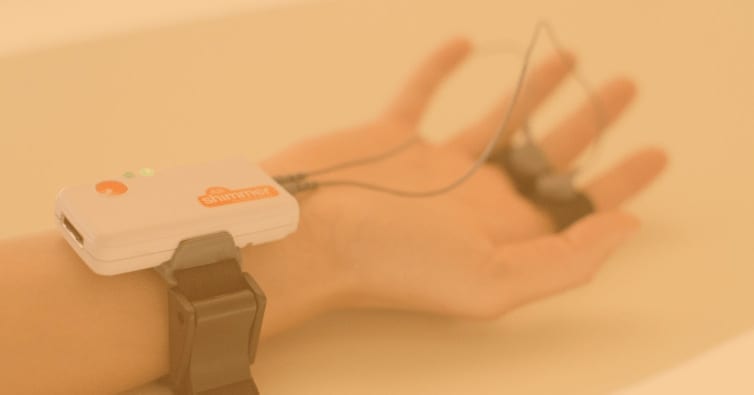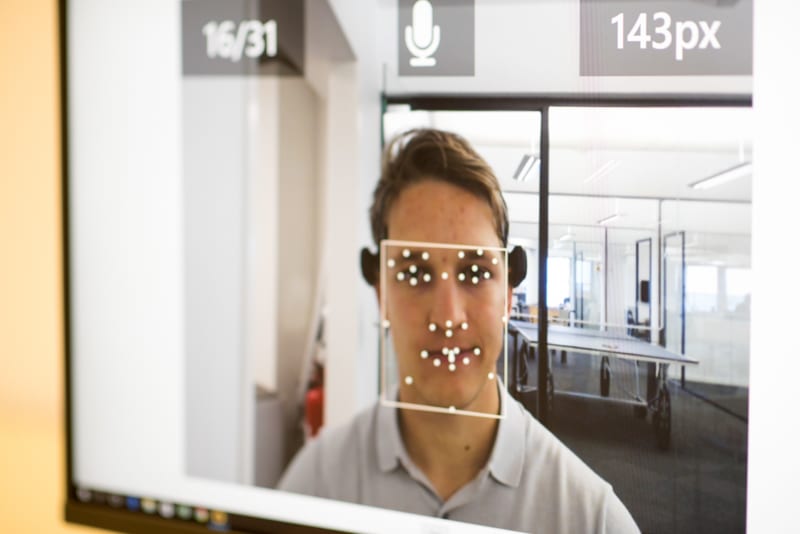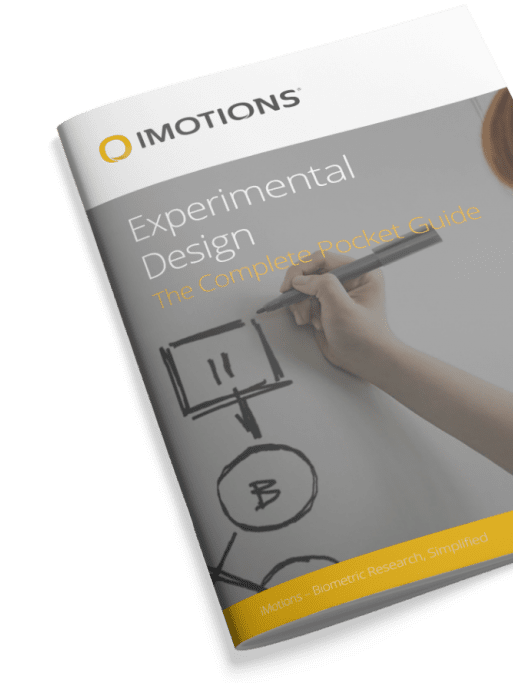Discover how biometrics are revolutionizing ad testing in our latest publication, Cracking the Code. This insightful piece delves into the innovative ways biometric technology enhances ad effectiveness, providing invaluable insights for advertisers seeking to optimize their campaigns through cutting-edge strategies.
Table of Contents
It’s no secret the world of advertising has undergone significant changes in the past decade. New platforms and formats coupled with changes in consumer behavior create exciting opportunities in the advertising landscape. But, they also bring challenges for ensuring messages stand out and reach the right audience at the right time.
The stakes are high when advertising fails – in addition to the wasted cost of developing and placing creative, brand perceptions are more vulnerable than ever in the digital age of instant, broad-reaching consumer feedback, and media coverage.
So how can companies gain more confidence in their advertising and see better results? The answer is simple: testing. More specifically, biosensor-based testing.
The Value of Ad Testing with Biometrics
Kantar/Millward Brown sums up the importance and benefit of testing well…“Great media placement can never make good on poor creative-money spent on media is wasted if the ad fails to deliver a memorable impression that will influence purchase behavior. Millward Brown’s analysis finds that consistent pre-testing improves a brand’s ad effectiveness by at least 20 percent compared to brands that do not test.”

Check out: How biosensors are used in Product development
Utilizing biometric methods for pre-testing compounds this value by delivering new layers of insight beyond traditional measures. Methods like eye tracking, facial expressions, and galvanic skin response (GSR) provide a real-time lens into subconscious consumer reactions that help ensure creative captures attention, and is highly relevant, thus, more effective.
Which is why leading brands are regularly publishing results demonstrating how biometric testing is helping improve their ad effectiveness, like Toyota’s Ogilvy Award-winning Jan at the Front Desk campaign.
So, what are some things you should be thinking about when conducting biometric ad research? We’ve broken it down for you…
Methods like eye tracking, facial expressions, and galvanic skin response (GSR) provide a real-time lens into subconscious consumer reactions that help ensure creative captures attention and drives engagement. Testing with biosensors has proven to be an accurate predictor of success of ads.
Step 1: Define your research objectives
The first step is to determine what success means by clearly defining the objectives of the advertising and the research itself.
For example, are you trying to bolster brand affinity, increase awareness of a product or service, etc? Are you evaluating multiple concepts to choose a winner, do you need diagnostic insights to optimize a specific spot or identify best practices? Do you want to create a database for future ad comparisons? Thinking through these questions upfront helps ensure the best possible study design and data analysis plan.
Keep in mind the value of biometric research tends to increase the earlier you are in the creative development process. Prior to big production spends and launch costs, you have more flexibility to select and optimize early-stage concepts and messaging.
Step 2: Testing your ads
It’s also important to consider context and control stimuli when testing ads to capture the most natural experience and best results. Specifically, think about the devices and masking content you’ll use.
For example, when testing TV ads, you may want to embed them in naturally occurring ad pods within programming content or in a media clutter reel. In this case, the mix of ads can be used for competitive comparisons and bench-marking. For digital ads, depending on format, you may want to test within a website or as pre-roll. Perhaps testing on a mobile phone or tablet is the best way to answer your research questions?
Considering context and control helps improve the validity of results and adds depth of insight to your research.
Step 3: Pick your sensors to test emotional responses
To begin testing, you’ll need to decide which methods best address your previously established research objectives. The ideal setup includes a mixture of biometric sensors and surveys used in combination.
Eye tracking
Eye tracking is an essential measure for ad testing. It demonstrates how respondents visually consume creative and whether key elements get noticed or go missed.
Additionally, it allows you to synchronize and better analyze additional measures. For example, you can tie a spike in GSR or Joy from facial expressions to exactly where respondents are focused on screen at any given moment. Knowing how audiences feel and react is much more powerful when tied to a defined element of an ad stimulus.
![]()
Galvanic Skin Response (GSR)
Galvanic skin response (GSR) is commonly used in ad testing to gauge emotional response. This measure detects sweat response across the skin, indicative of physiological arousal, and allows you to understand the intensity of emotional response. However, it is not a direct indicator of valence (positive/negative). So using it in combination with other measures like facial expression analysis is a best practice.
Common ways of assessing this data include comparison of Peaks Per Minute or trend lines for overall response. Additionally, aggregate highs and lows across the audience are often evaluated for deep diagnostic insights.

Facial Expression Analysis (FEA)
Facial expression analysis is used to recognize human emotions based on facial cues through advertising experiences. It provides moment-to-moment valence so you can understand whether audience emotional is positive, negative, or neutral at any given time as well as discrete emotions such as joy and surprise.

Combining eye tracking, GSR, and facial expression analysis provides a clear picture of how respondents engage (or don’t) with advertising on multiple dimensions. Understanding where people look, how strong of an emotional response they have, and the direction of that response is a comprehensive way to biometrically assess advertising.
Step 4: Include Survey Questions
iMotions recommends a combination of biosensors and self-reported methods for the most complete and complementary understanding of audience response to advertising.
Depending on research goals, questions can be asked pre and/or post biometric experiences to assess key metrics like brand affinity or recall, and understand preferential responses as well as attitudes & usage.
Step 5: Combining the Results
Results from all signals are synchronized and time-locked in iMotions software to simplify analysis. For quick insight generation, analytic tools allow for easy export of summary scores and visualizations of eye tracking data and moment-to-moment signals.
An increase of GSR peaks could suggest that a stronger physiological response was elicited, while the valence of facial expression analysis could provide information about the emotional expressions produced in response to the adverts. EEG can add to this by providing data about the level of engagement that the participant experienced.
Additionally, you can export raw data to additional programs like Excel, SPSS, MATLAB, for more in-depth statistical analysis if preferred.

Biometrics in Ad testing for Deeper Insights
Combining biometric signals enables multi-dimensional comparisons of ads as well as a detailed understanding of the most and least successful moments.
For example, a drop in GSR and EEG engagement, presence of neutral facial expressions, and lots of visual attention scatter occur during an elongated scene of fast-paced cuts during an ad. The intention to create excitement with the fast-paced scene missed the mark and instead, respondents “tuned out”.
The visual attention scatter combined with other signals made it clear respondents were having a hard time orienting to the complexity of the quick cuts. A recommendation was made to slow down the pacing of this sequence which significantly improved ad performance.
Looking at any one of those signals in isolation wouldn’t have indicated the severity of the issue with that part of the ad, or enough context to assess the cause. Having a time-linked evaluation of real-time audience response through multiple biometric channels allows advertisers to hone in on exactly what’s engaging audiences and what’s not. Armed with this insight, ads can be better optimized to stand out by focusing on the messaging and visuals that are most meaningful to consumers.
To learn more about how to set up your own study, download our free guide to study design below.
Free 44-page Experimental Design Guide
For Beginners and Intermediates
- Introduction to experimental methods
- Respondent management with groups and populations
- How to set up stimulus selection and arrangement












